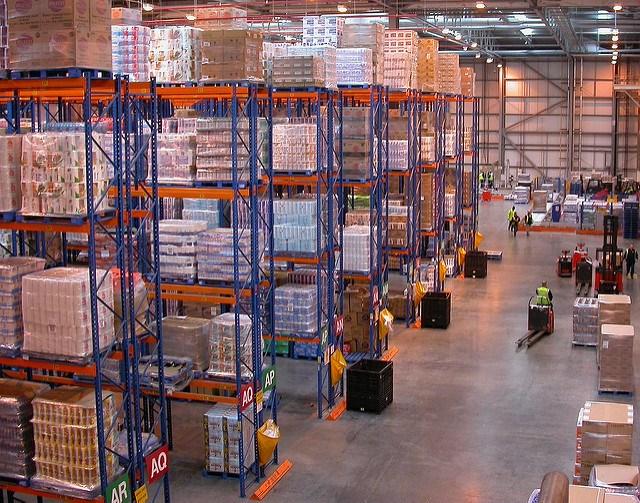
Supply chains represent a significant source of greenhouse gas (GHG) emissions reductions and climate-related risks to companies. So, how are suppliers assessing and managing climate risks? It’s a mixed bag, as a recent report from CDP analyzing information from more than 4,000 suppliers of 75 of its supply-chain members. The participants represent over $2 trillion in procurement spending.
First, the good news. Some findings represent improvements. Suppliers that participated from 2013 to 2015 showed “noticeable increases” in both their level of action and risk perception. Perception of climate change risks increased from 78 percent in 2013 to 84 percent in 2015. Perception of regulatory risks also increased from 71 percent in 2013 to 77 percent in 2015. Suppliers with an emissions-reduction target increased from 50 to 56 percent. Suppliers reporting gross global emissions also increased from 68 to 85 percent.
The majority of participants (72 percent) identified regulatory physical and/or a wide range of other climate-related risks. But the findings also show that suppliers “are slow to act,” as the report put it. Half of the suppliers CDP invited to report their climate and water data didn’t do so. Only about half of those that did participate implemented "any given measure of climate risk management.” Those measures range from integrating climate change issues into business strategy (63 percent) to engaging with suppliers (25 percent). Only a third of participants reported decreasing Scope 1 and Scope 2 emissions for the reporting year.
Despite some of the negative findings, the report acknowledges that the “supplier data also offer[s] hope.” Suppliers that report on their climate change performance take more action to manage risks and are more likely to reduce their emissions from the previous year.
However, the opposite is also true. Suppliers that didn’t respond to CDP are less likely to have such procedures in place. Using first-time participant’s data as a proxy for the 49 percent of suppliers that didn’t respond to CDP’s questionnaire, “it is possible to deduce that this much larger group of non-reporting suppliers also performs poorly,” the report states.
That conclusion suggests that CDP's data may be giving “too positive a picture of supplier performance.” So, increasing response rates is key to gaining a better understanding of climate change risks and management of them.
Suppliers just aren't doing enough
Here’s some more good news with a bit of bad thrown in. A large majority of participants acknowledge climate change risks, and 72 percent identified climate change risks that may significantly affect their companies. Most suppliers (64 percent) cited regulatory risks, and over a third cited regulatory risks that are both likely to occur and are significant, with the top three being fuel/energy taxes and regulations, carbon taxes, and obligations to report on emissions. However, the number of participants identifying regulation risks actually decreased from 66 percent in 2013.And here’s more bad news. Some of the biggest climate change risks are physical, but fewer suppliers (46 percent) cited the physical risks of climate change to their business. Forty percent did identify other climate risks such as changing consumer behaviors and company reputational risks.
Supplier data shows that climate change risks are underestimated: Although 60 percent of the participants have climate risk assessment and management procedures in place, 35 percent do not.
Water risks are some of the biggest climate change risks, and water or lack of it is on the minds of many Californians due to their state’s four-year drought. Plenty of other regions in the world are also water-stressed. However, water risks are “particularly under-evaluated and under-reported.” For example, only 826 (42 percent) of the 1,969 suppliers that CDP invited to participate in its supply chain water program actually participated. And of those that participated, only 41 percent assessed their water risks, 45 percent integrated water into their business strategies, and 36 percent adopted a water policy with clear goals and guidelines for taking action.
Reporting and managing climate risks saves money. Suppliers who participated for three years in CDP’s questionnaire saved a total of $6.6 billion a year through GHG-reduction projects and an average of $1.3 million per supplier in emissions-reduction initiatives. They also reported an average savings of $900,000 per initiative.
Given the size of the suppliers represented by the participants, there is a significant opportunity for GHG reduction. If they stepped up their game and significantly improved in the next few years, the world would be closer to realizing the goal of the Paris climate agreement: keeping temperature increases to 1.5 degrees Celsius. And if the suppliers who declined CDP's requests started participating, we would be even closer still.
Image credit: Flickr/Nick Saltmarsh

Gina-Marie is a freelance writer and journalist armed with a degree in journalism, and a passion for social justice, including the environment and sustainability. She writes for various websites, and has made the 75+ Environmentalists to Follow list by Mashable.com.














